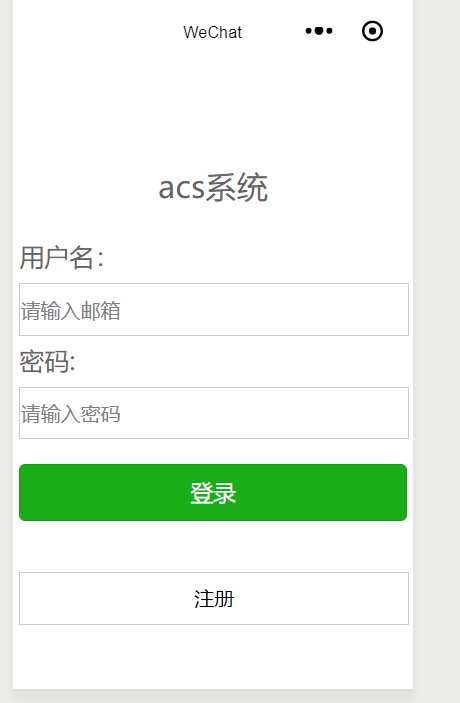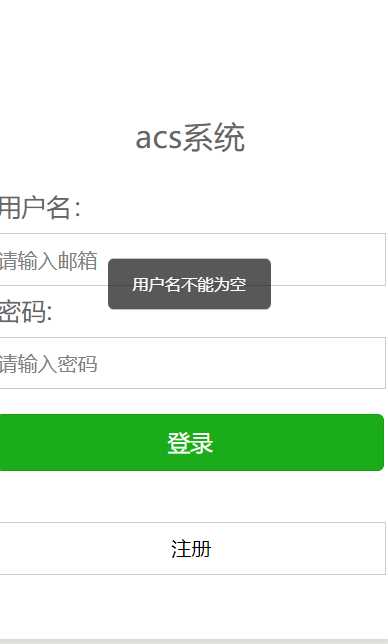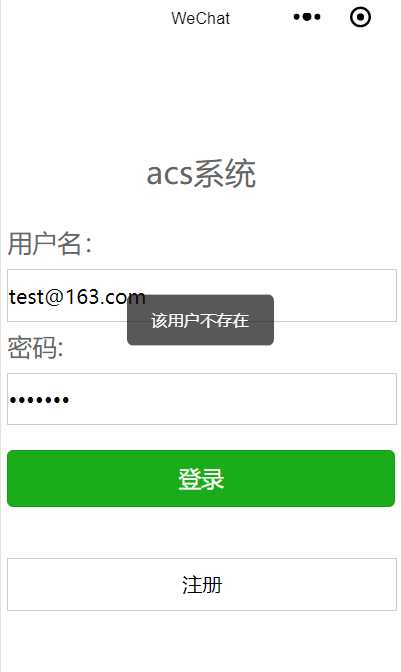标签:class mit duration etl 不能 ons window 信息 oci
关于网络通信,这里我使用的是wx.request,官方代码示例如下:
wx.request({ url: ‘test.php‘, //仅为示例,并非真实的接口地址 data: { x: ‘‘, y: ‘‘ }, header: { ‘content-type‘: ‘application/json‘ // 默认值 }, success (res) { console.log(res.data) } })
对于初学者而言,官方示例可能会看不怎么懂,所以我就以我自己当初项目驱动学习的方式(开发个人的记账小程序)来作为学习实例。
以登录来说,效果图如下:

此次示例包含表单校验和网络请求,代码如下:
login.js
// pages/login/login.js Page({ /** * 页面的初始数据 */ data: { username: "", password: "" }, register:function(e){ wx.navigateTo({ url: ‘../register/register‘ }) }, formSubmit: function(e) { console.log(e.detail.value.email); console.log(e.detail.value.pwd) var username = e.detail.value.email; var password = e.detail.value.pwd; var emailReg = /^[A-Za-z\d]+([-_.][A-Za-z\d]+)*@([A-Za-z\d]+[-.])+[A-Za-z\d]{2,4}$/; if (username == null || username == "") { wx.showToast({ title: "用户名不能为空", icon: ‘none‘, duration: 1500 }) } else if (!emailReg.test(username)) { wx.showToast({ title: "邮箱有误", icon: ‘none‘, duration: 1500 }) } else if (password == null || password == "") { wx.showToast({ title: "密码不能为空", icon: ‘none‘, duration: 1500 }) } else { wx.request({ url: getApp().globalData.urlPath + "sysUser/login", method: "POST", data: { username: username, password: password }, header: { "Content-Type": "application/x-www-form-urlencoded" }, success: function(res) { console.log(res.data); if (res.statusCode == 200) { //访问正常 if (res.data.code == "000000") { wx.showToast({ title: "登陆成功", icon: ‘success‘, duration: 2000, success: function() { wx.navigateTo({ url: ‘../manage/manage‘ }) wx.setStorage({ key: ‘userId‘, data: res.data.user.userCode }) wx.setStorage({ key: ‘userName‘, data: res.data.user.userName }) console.log("test:" + wx.getStorageSync(‘userName‘)); } }) } else if (res.data.code == "111111") { wx.showToast({ title: "密码错误", icon: ‘none‘, duration: 1500 }) } else { wx.showToast({ title: "该用户不存在", icon: ‘none‘, duration: 1500 }) } } else { wx.showLoading({ title: ‘系统异常‘, fail }) setTimeout(function() { wx.hideLoading() }, 2000) } } }) } } })
关于login.js,主要是写通信逻辑的,与咱们平时写js差异并不大,唯一不同的就是api长得不样罢了。
关于其中的getApp().globalData.urlPath,相当于全局变量,不用我每次都写一大串https之类的。
表单校验的效果如图:


代码说明:
显示消息提示框(相当于js的alert提示):
wx.showToast({ title: "邮箱有误", icon: ‘none‘, duration: 1500 })
获取input属性为name的值(相当于js中form.email.value,前提是这个表单name要为form,且form中的input要存在一个name=”email”)
e.detail.value.email;
跳转代码(相当于window.location.href):
wx.navigateTo({ url: ‘../manage/manage‘ })
至于wx.request,我想只要是写过ajax的,都很好理解。
login.json:
{ "usingComponents": {} }
关于这个login.json有什么用,我唯一想到的是页面的title(其实相当于html中的title)
lgoin.wxml:
<view class=‘container‘> <view class=‘header‘> <text>acs系统</text> </view> <view> <text>\n</text> </view> <view class=‘header‘> </view> <form bindsubmit="formSubmit"> <view class=‘section‘> <text>用户名:</text> <input type=‘text‘ name="email" placeholder=‘请输入邮箱‘ /> </view> <view class=‘section‘> <text>密码:</text> <input password=‘password‘ name="pwd" placeholder=‘请输入密码‘ /> </view> <view class=‘button‘> <button type=‘primary‘ form-type=‘submit‘>登录</button> <text>\n</text> <view bindtap=‘register‘ class="register">注册</view> </view> </form> </view>
wxml相当于视图(如html或者模板语言(jsp、volocity、freemarker、beetl等))
视图除了可以写一些标签之类的,还可以写一些逻辑判断。后面会讲到的。
login.wxss:
/* pages/login/login.wxss */ form{ width: 310px; height: 240px; line-height: 40px; /* border: 1px solid red; */ } input{ border: 1px solid #ccc; width: 310px; height: 40px; } .button{ margin-top: 20px; } .header text{ font-size: 25px; color: #666; } form text{ font-size: 20px; color: #666; } .register{ color:black; display: block; width: 310px; height: 40px; border: 1px solid #ccc; text-align: center; }
这个wxss就相当于css,定义视图的样式,决定视图长什么样(好看不好看)
关于微信小程序网络通信,更多信息可以参考官方文档:
wx.request
标签:class mit duration etl 不能 ons window 信息 oci
原文地址:https://www.cnblogs.com/youcong/p/11215553.html